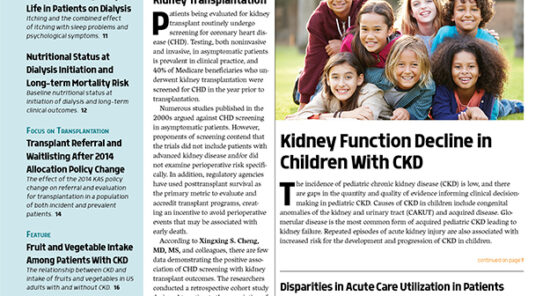Credit: Original article published here.Currently in the United States there are more than 500,000 patients with kidney failure on dialysis. The preferred treatment for kidney failure is kidney transplantation. Compared with dialysis, transplantation is associated with longer survival, better quality of life, and fewer hospitalizations. There are national policy directives for dialysis facilities designed to maximize access to transplantation and incentivize waitlisting. However, according to Rachel E. Patzer, PhD, MPH, and colleagues, only ~18.5% of patients with kidney failure are on the transplant waitlist. Further, there is significant variation in access to the waitlist and subsequent transplant. In December 2014, the United Network for Organ Sharing (UNOS) Organ Procurement and Transplantation Network (OPTN) implemented a policy that has had substantial impact on the way kidneys are allocated. Improvement in transplantation access equity was a major goal of the new kidney allocation system (KAS). The primary determinant of priority for organ allocation is allocation time. The new system changed the start of the allocation time from the date of waitlisting to the date of dialysis initiation (with the exception for pre-emptively waitlisted patients). Since the implementation of KAS, waitlisting has declined. It is unknown whether the decline was due to a
Transplant Referral and Waitlisting After 2014 Allocation Policy Change


